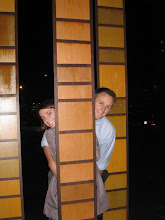I was reminded of the PACA process today while reading an article posted on the Fast Company Web site by Allyson Kapin. Ms. Kapin interviewed eight social media experts on where they saw Web 2.0 changing in 2009. One expert, Rebecca Moore, the director of outreach for GoogleEarth, discussed the process of collaborative mapping and it's influence in Web 2.0 in 2009.
"In terms of social media, I think we are just at the beginning of 'collaborative mapping'-people working together with friends and colleagues to build shared maps of places they care about."
She goes on to describe Appalachian Voices, a grassroots environmental organization, and how it paired social media with mapping to advocate for the end of mountaintop-removal coal mining.
What a great hope for the future of social media! The combination of an old Peace Corps community assessment method in the developing world and the new technology of developed nations will impact how organizations operate in 2009.
Sometimes returned volunteers are asked about how their service transfers in to the way we do business in America. The answer is always clear for me, but was reinforced by Ms. Moore in today's Fast Company article. The Peace Corps teaches project design through community engagement. It's not a foreign concept to realize that the most successful work is done when people with resources-or products or services- collaborate with their target constituents.

2 comments:
Sarah, thanks for the link to the Fast Company article - and how cool that you're already on top of trends we'll need to know about in the future! Have you seen this video? Warning, it's mind-blowing. http://www.youtube.com/watch?v=EOpA9kNb3fk
Good luck with the job hunt!
Lara, thanks so much for this video. I had seen an outdated version from 2006 or 2007, but every time they redo it I get a little more overwhelmed!
Thank you!
Post a Comment